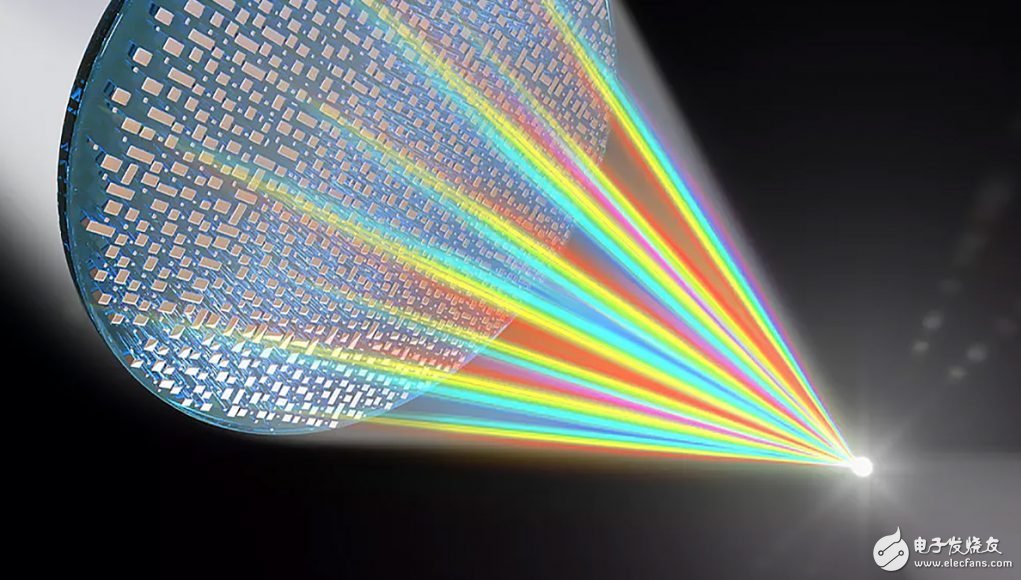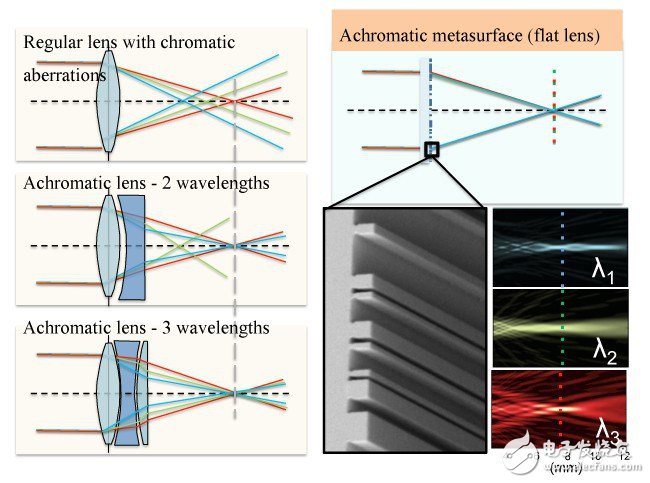The helmets of virtual reality and augmented reality will be clearer and lighter, thanks to a new production process that uses nanotechnology to not only reduce the thickness of the lens, but also the current VR helmet.

A study from the School of Engineering and Applied Science (SEAS) at Harvard University details a "flat lens" improvement technique that now uses what they call "glass substrates and tiny, light-concentrated Silicon antennas" to redirect light.
The updated design is different from the past planar lens. By using the insulating material designed by nano-silicon technology, the red, green and blue colors can be used to change the angle in the visible spectrum.
Replacing the clunky lens of a modern virtual reality helmet with a new generation of "flat lens" not only significantly reduces the physical size and weight of the helmet, but also completely eliminates the "color difference" because the lens reflects different colors at different angles. The color is misplaced by light.
This phenomenon is usually corrected by increasing the number of lenses, resulting in a contact lens that changes the red, green, and blue spectrum of the spectrum closer to the center of focus. The more lenses, the closer to perfection, but the solution is to increase cost, weight, and size of each corrective lens.
Another more conventional method of chromatic aberration correction is achieved by digitally shifting the color in software, which is mainly used for single-lens VR head-mounted displays currently under development, such as the Oculus Rift. But its downside is that it only works when the eye is looking directly at the center of the lens, and when the user looks elsewhere in the lens, it shows signs of excellent difference.

At present, there is no news that the application of nanotechnology to helmets and production is still unknown. The upgrading of products will follow certain development rules. As the demand for virtual reality continues to grow, mobile-side smartphone screens may give way to more powerful, more personalized displays, providing higher refresh rates, resolutions, and a broader view.
The demand for VR technology in the field of optics may also increase, which is a good opportunity for lens manufacturers to add their chips to virtual reality users, but can only wait for the "flat lens" to safely leave the R&D. After the laboratory entered the market.
However, areas such as photography, astronomy and microscopes can take advantage of new, shrinking optical systems and help them bring technology to market. Therefore, virtual reality may currently need to play a secondary role and need to serve other industries for a while, but its future is worth looking forward to.
Our Surface Mount Box could include the CAT5E CAT6 CAT6A RJ45 Connectors
The surface mount box is an ideal for wall box and wire installation, we design many junction box, back mount box, blank mount box, loaded surface mount box.
Mateiral: ABS, PBT UL94V-0
1~8 ports and colors supply for your choice, they are an ideal for low voltage application for your security, data, networking solutions and telecom projects.
CAT6 Surface Mount Box,Category 6 surface mount box,cat6 surface mount jack,cat6 wall mount box
NINGBO UONICORE ELECTRONICS CO., LTD , https://www.uniconmelectronics.com